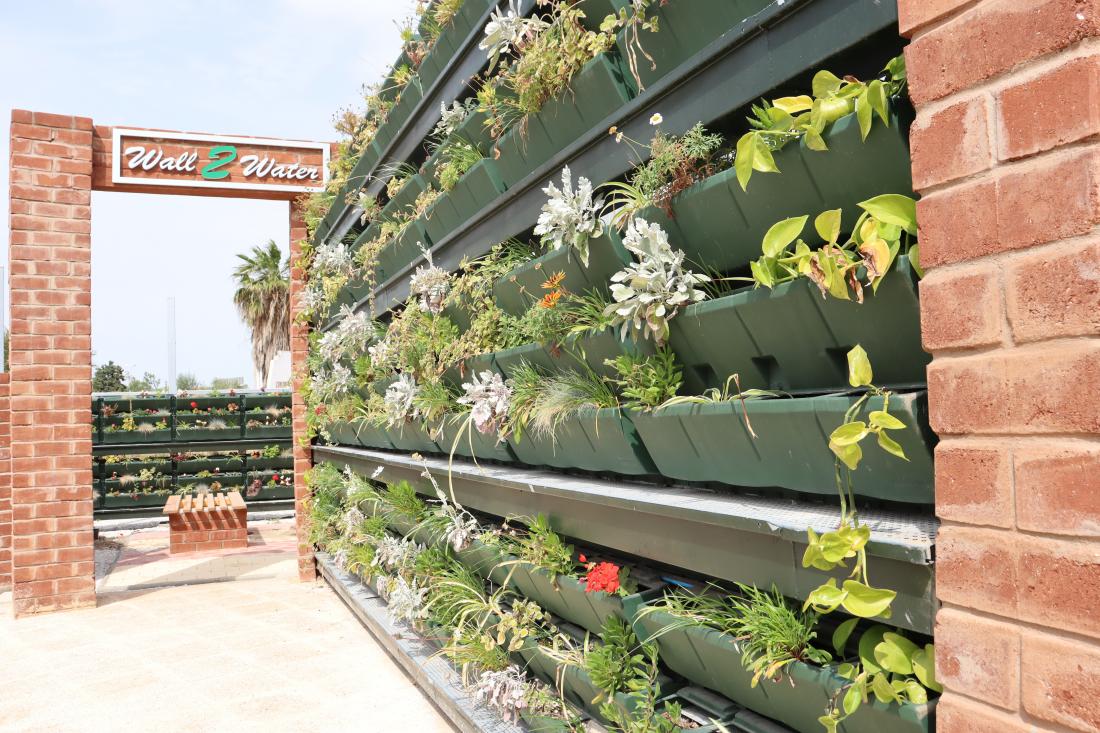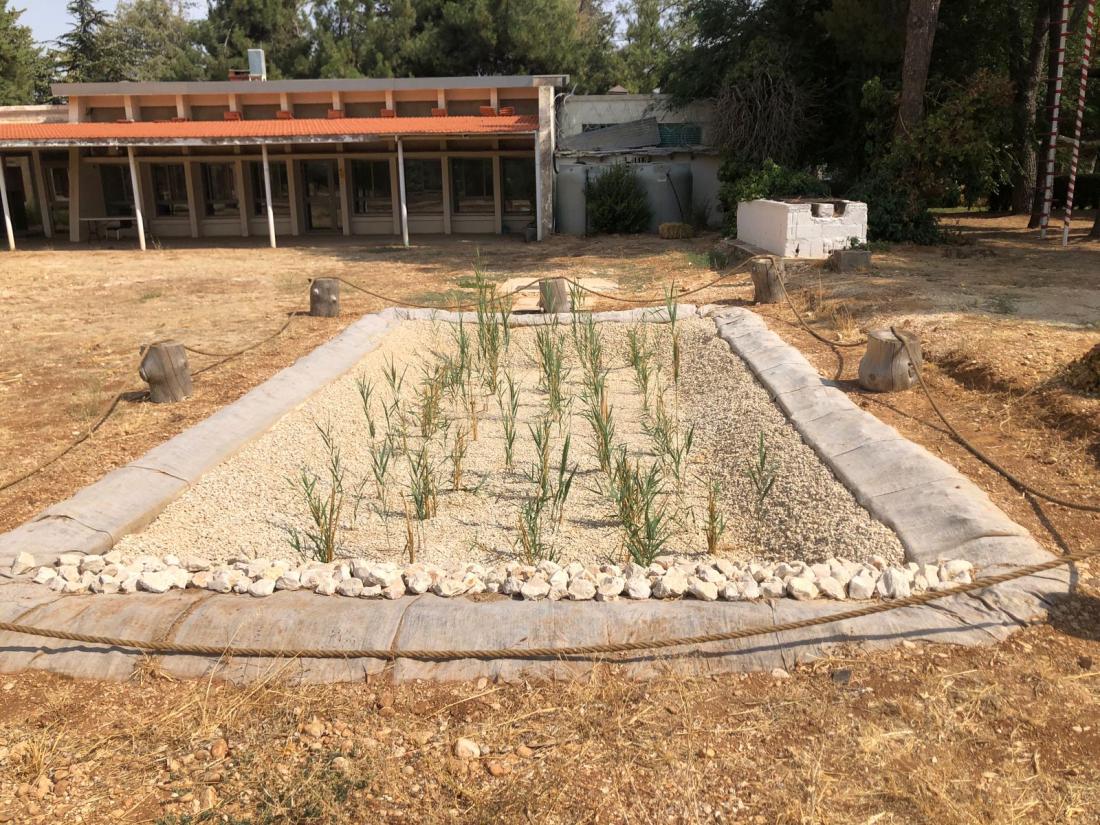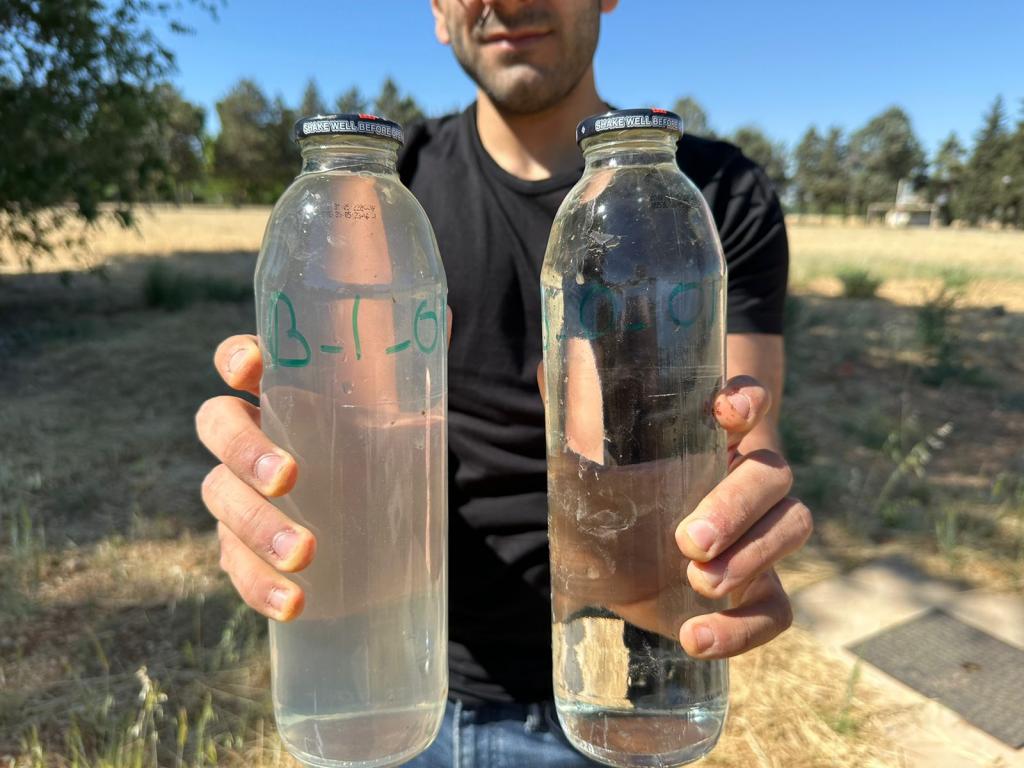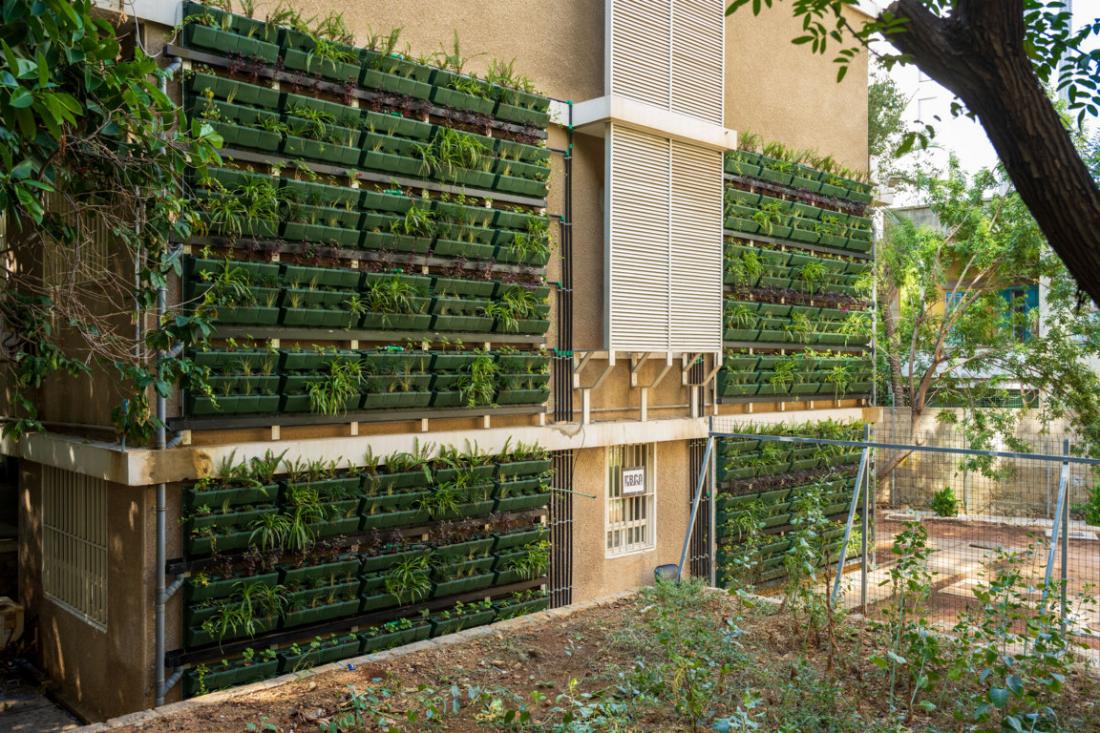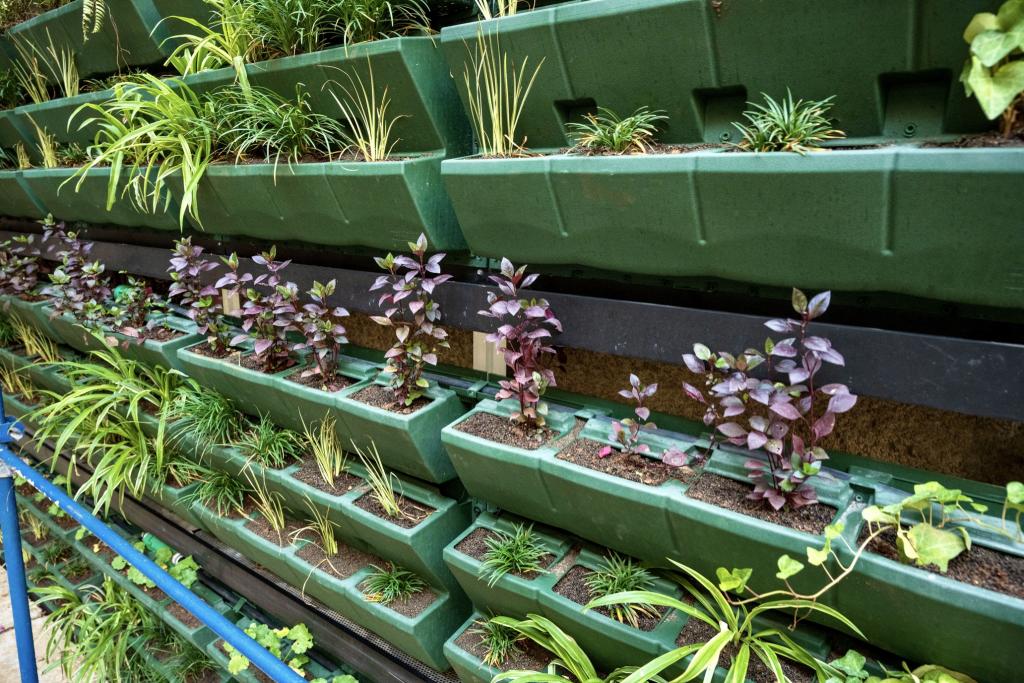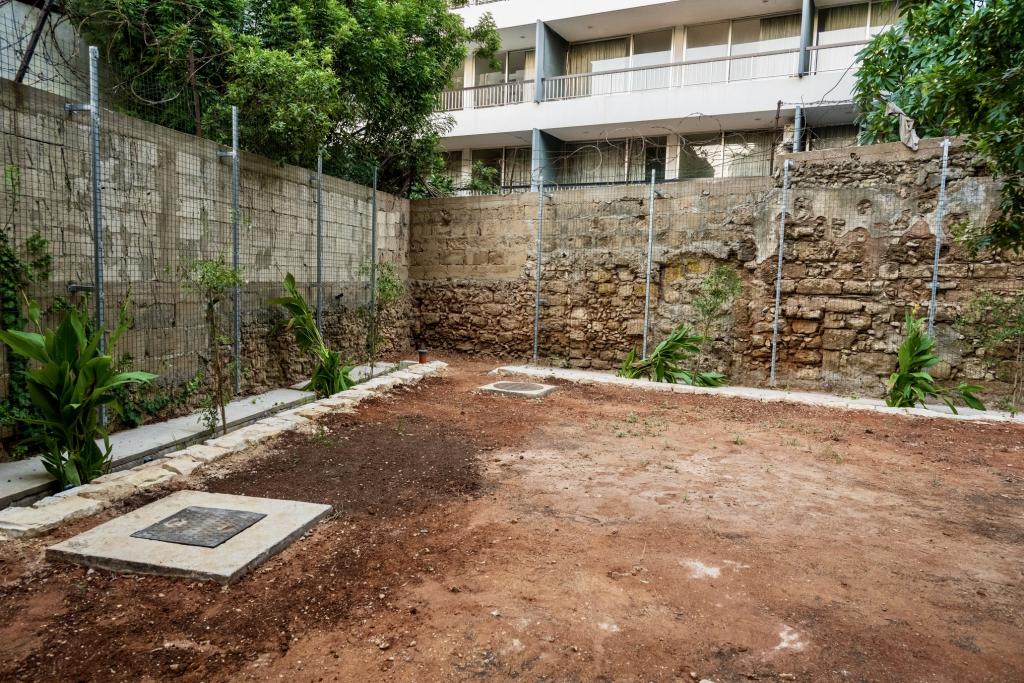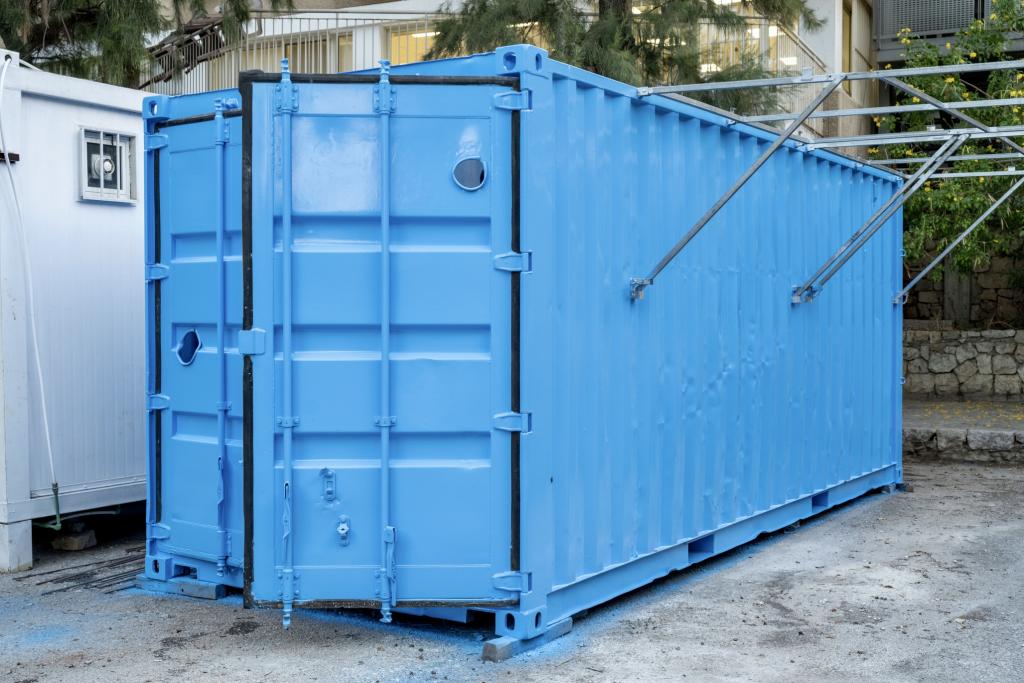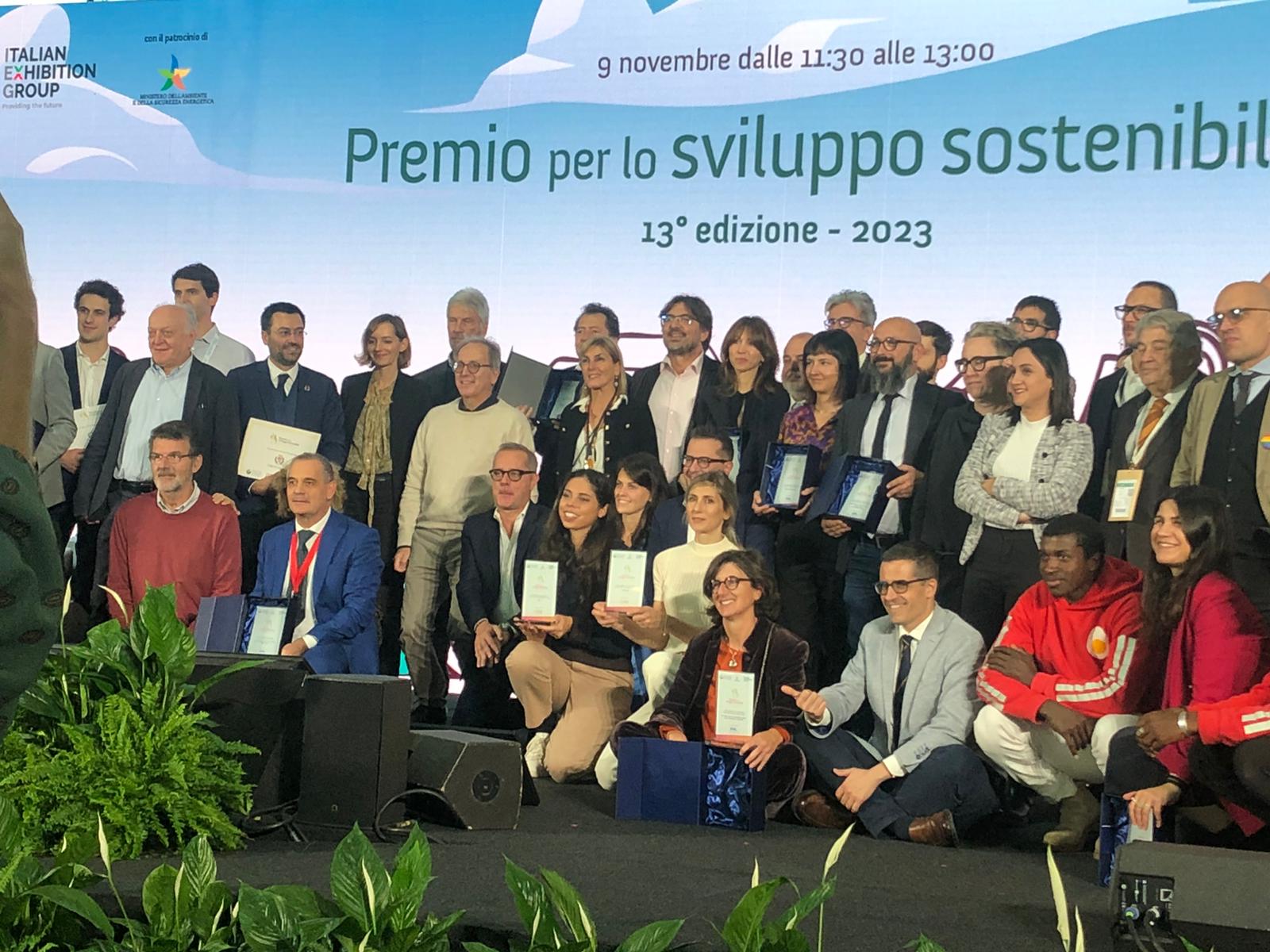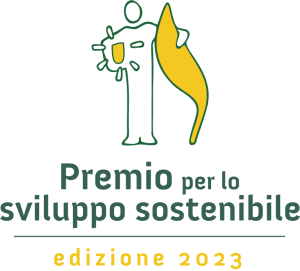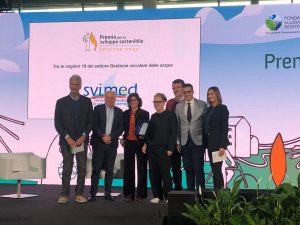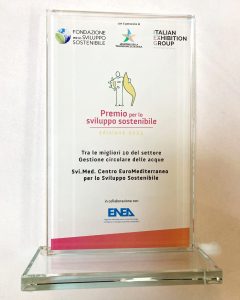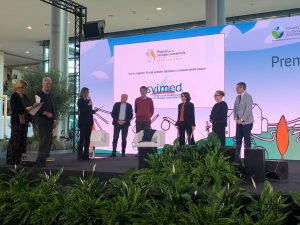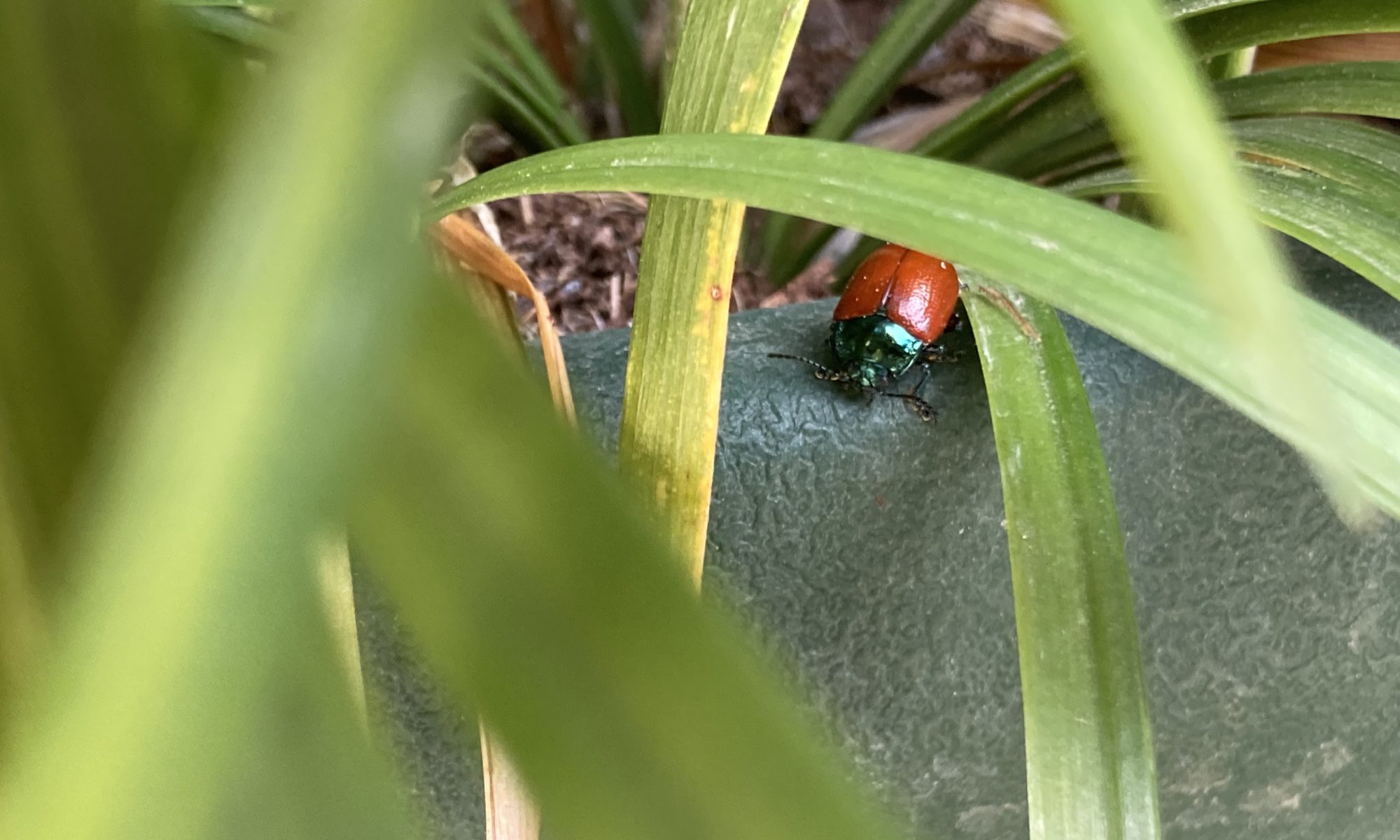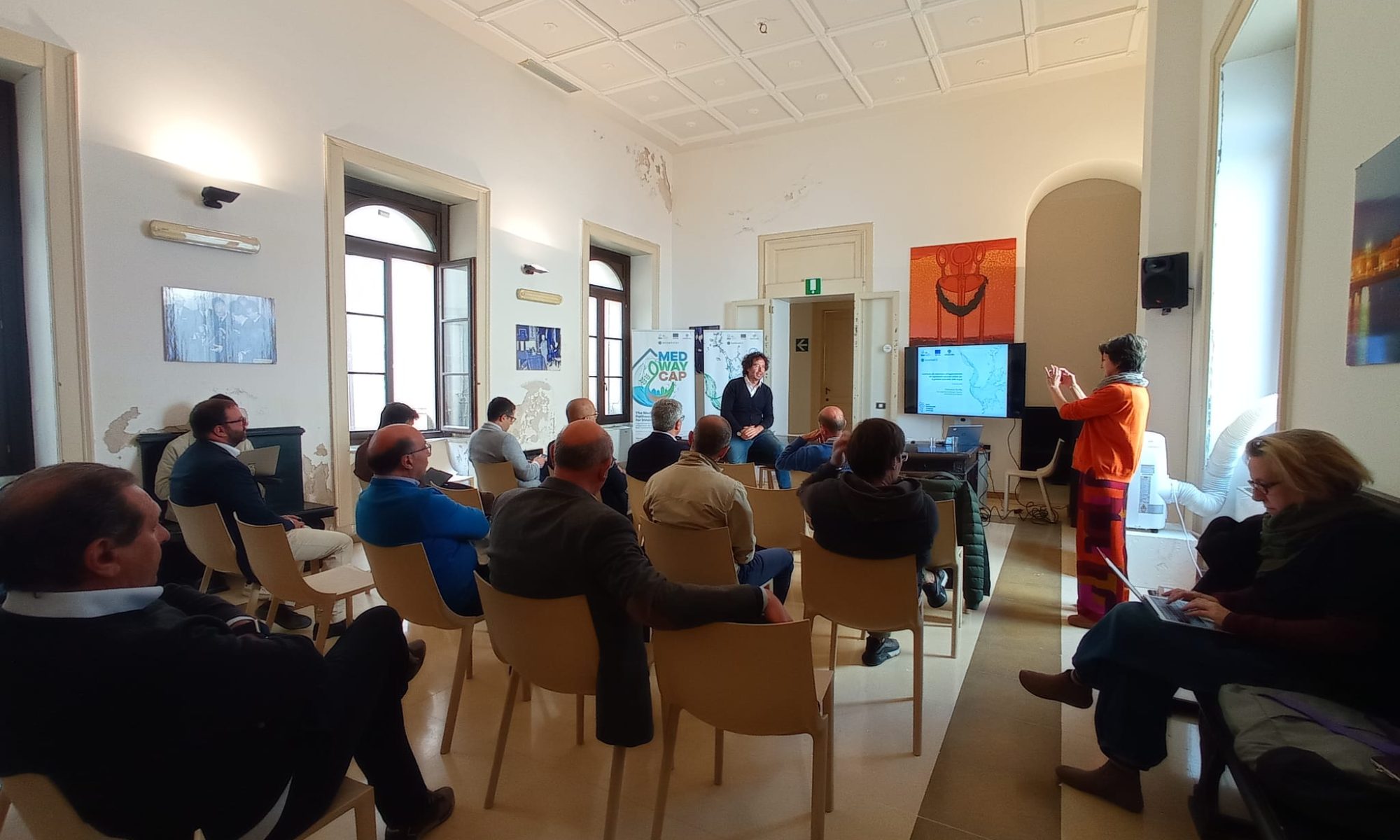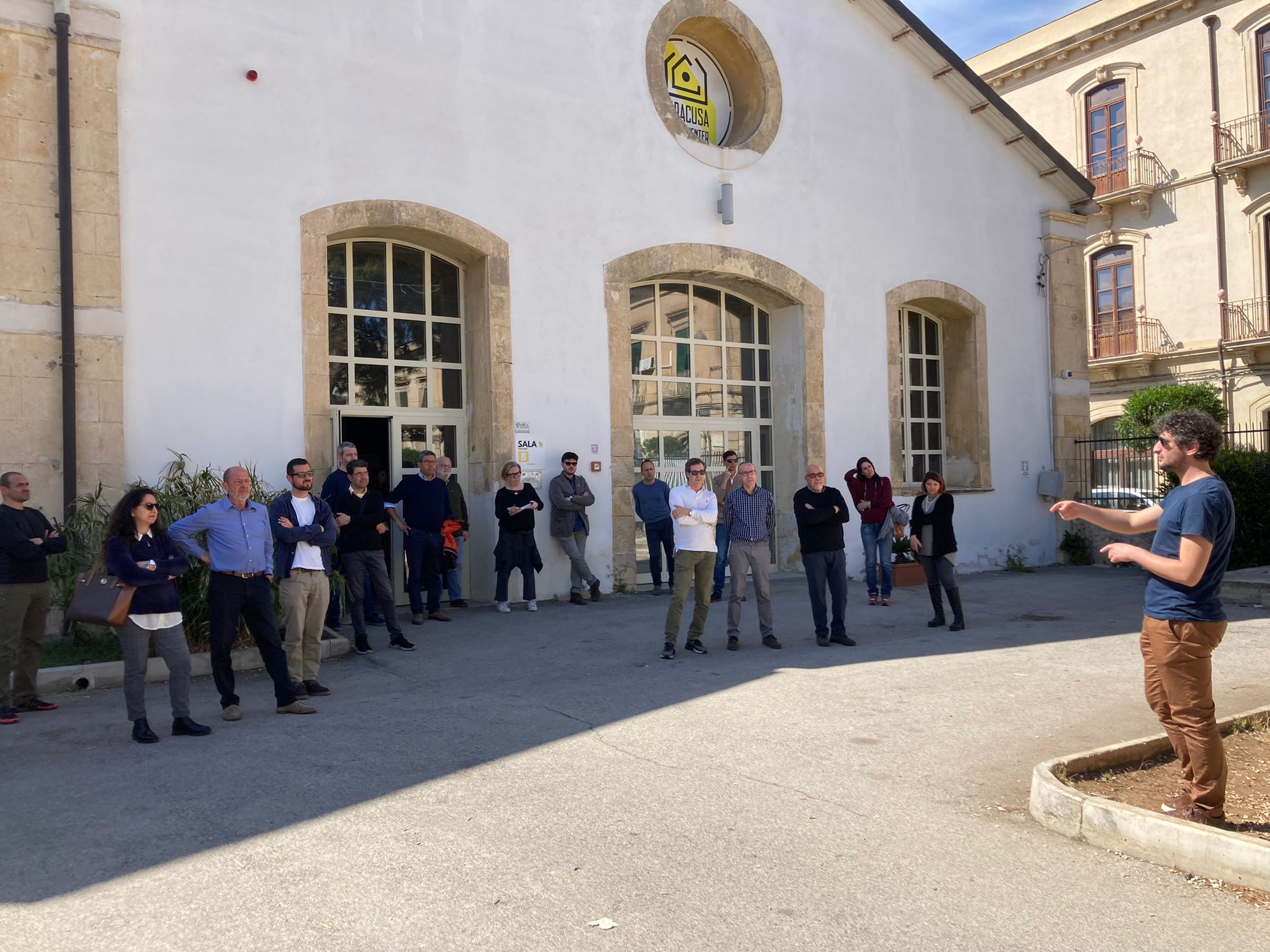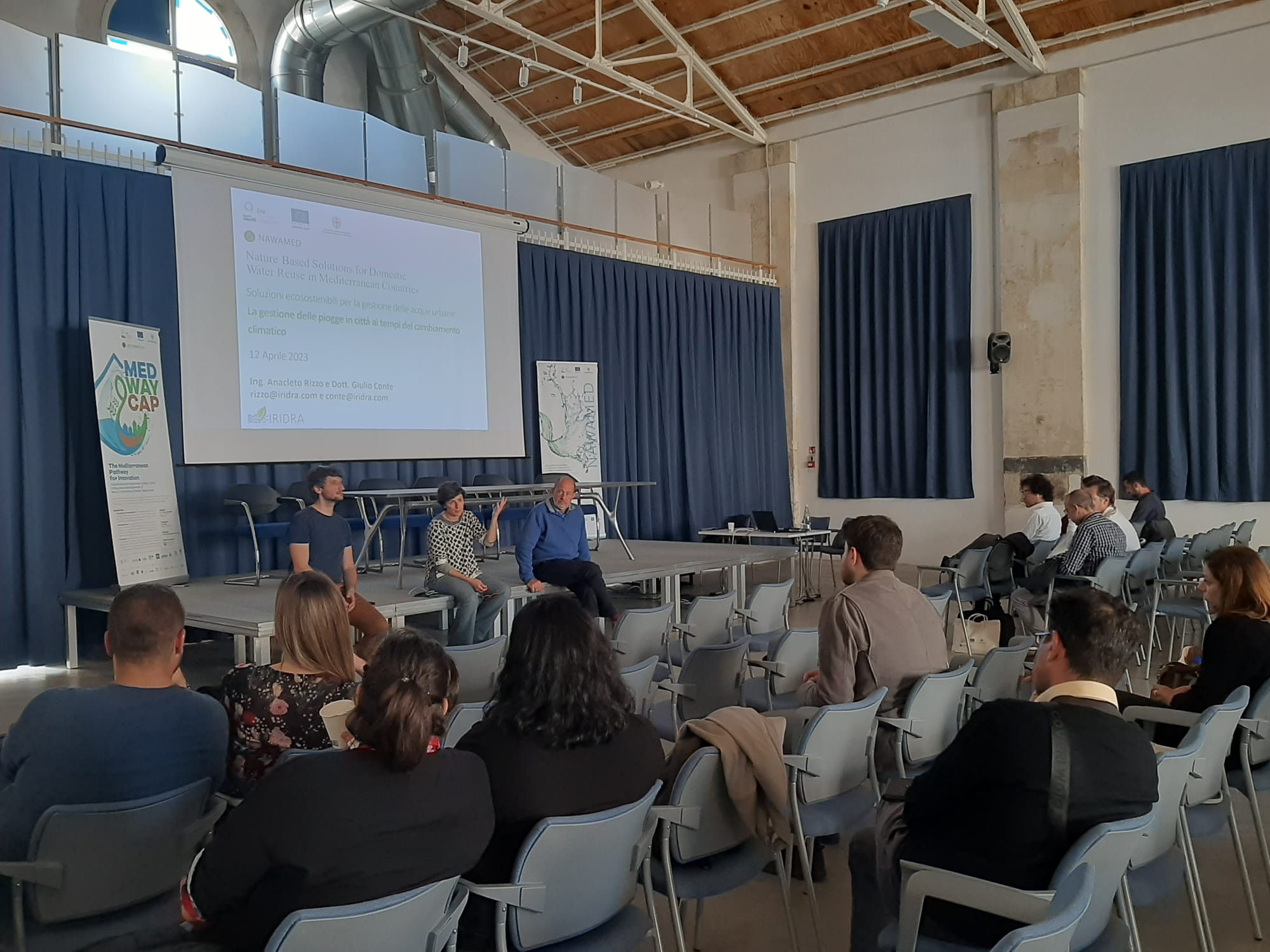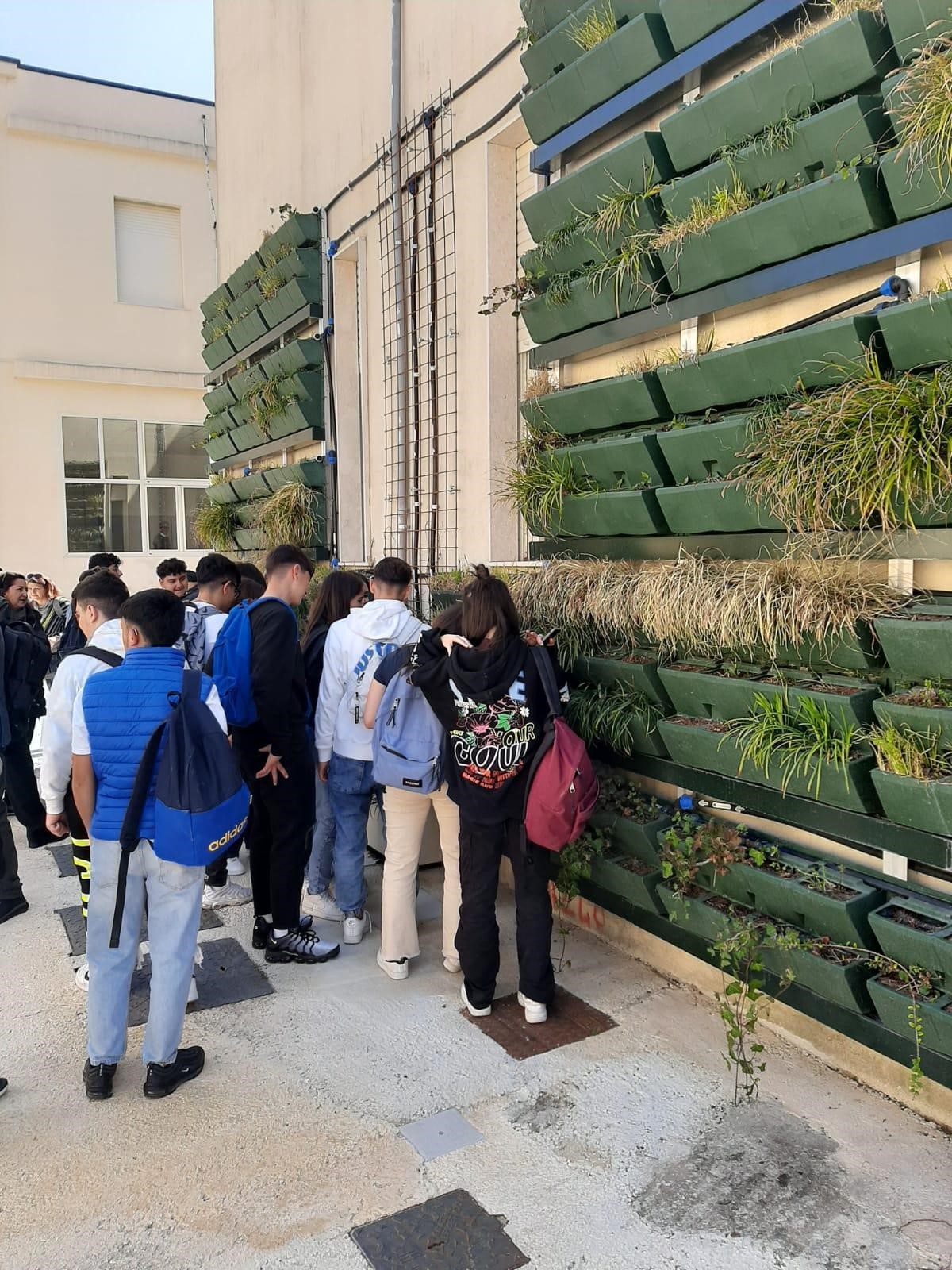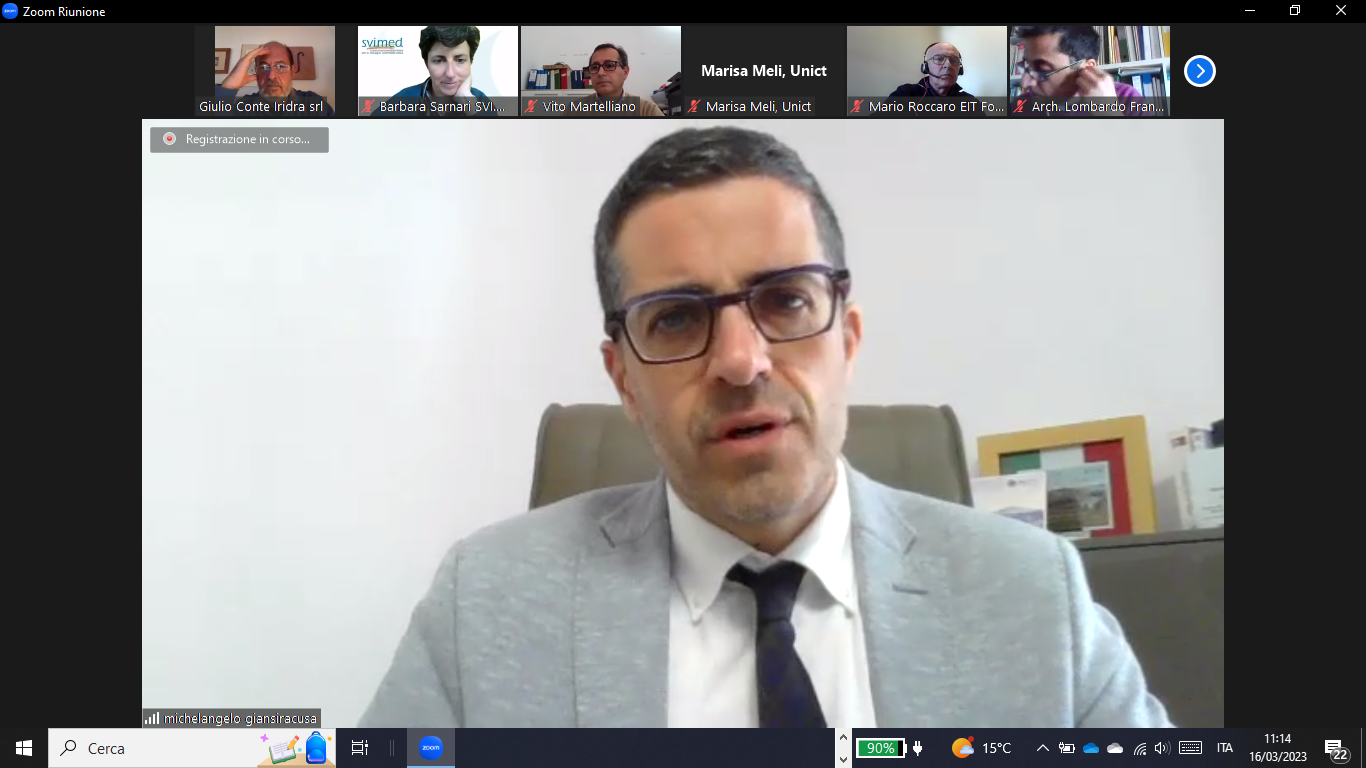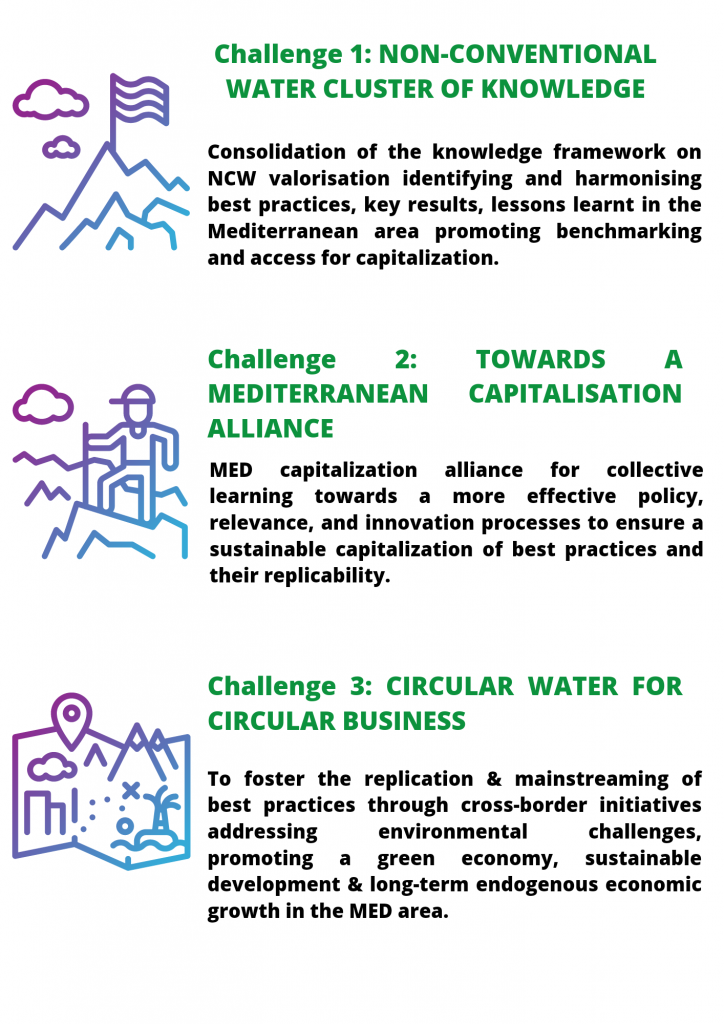The Green Wall for greywater treatment at the University of Jordan is one of the pilot sites of the NAWAMED project in Jordan. The type of green wall implemented in the University of Jordan pilot (Al-Zahra’a Dormitory), a so-called Nature-Based Solution (NbS), is the Green Facade, which is basically a vertical flow constructed wetland (CW) hosted in trenches along the building walls and planted with ornamental and climbing plants. The water percolates vertically through the treating medium in the trenches and then is collected in a tank for subsequent reuse (e.g., drip irrigation and toilet flushing).
The pilot installation collects the greywater to treat from the showers and the washbasins of the student’s building (Al-Zahra’ a Dormitory) which regularly hosts around 300 students for 10 months per year.
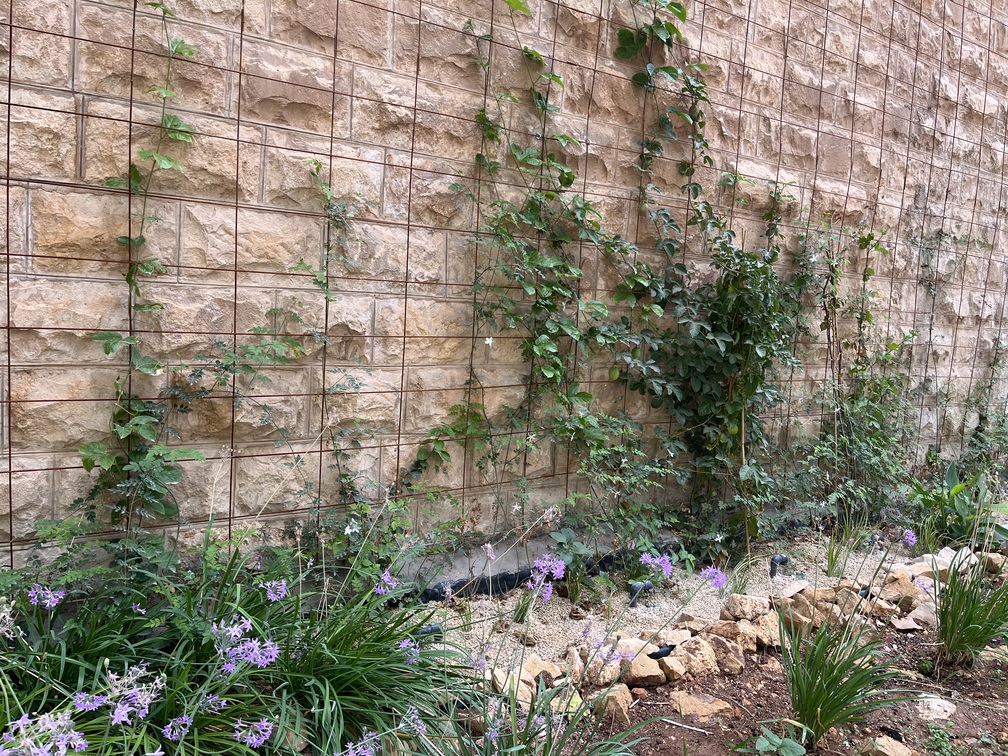
The installed Nature-Based Solution (NbS) at the Al-Zahra’a Dormitory is divided into three main areas, providing a green wall area of about 288 m2 (72 m length * 4 m high), and able to treat and recover greywater flow rate equal to about 4.8 m3/d.
The bioretention systems for rainwater and greywater treatment at Zain Park, located in the city of Jerash, is the second pilot site for the NAWAMED project in Jordan. The park includes a two-storey building with an area of 600 square meters, which contains training halls, a carpentry workshop, and internal and external sanitary units used by staff, trainees, and visitors. It also foresees courtyards, paths, trees, green areas, a collection tank for rainwater, and irrigation networks for crops.
The pilot installation includes two planted ponds which filters the greywater from the washbasins and the rainwater from the roof. The treated water is transported through pipes to be collected inside the existing collection tank, which is linked with the irrigation networks of the park, providing water for the dry summer season.
Increased water demand coupled with rapid urbanization and climate change are some of the main driving forces of water crisis. This stresses the need for responsible water management, innovation, and a shift in awareness at both the private and public levels. Therefore, greywater can be a cost-effective alternative source of water and can potentially help to overcome the water scarcity problem in Jordan.
NbS can be implemented as a more practical and attractive technology for greywater treatment and reuse and can improve the aesthetic appearance in urban settlements (such as gardens of urban households, public parks and roadsides) also in warm climatic conditions of arid /semi-arid regions. Moreover, green facades create a link between efficiency, a green infrastructure, and a psychological and aesthetic effect. Such systems can radically reduce water consumption taking a real step toward sustainability.
Providing financial incentives can encourage the adoption of non-conventional water (NCW) reuse solutions but may require budget allocation and coordination with relevant authorities to effectively implement and manage such incentives.
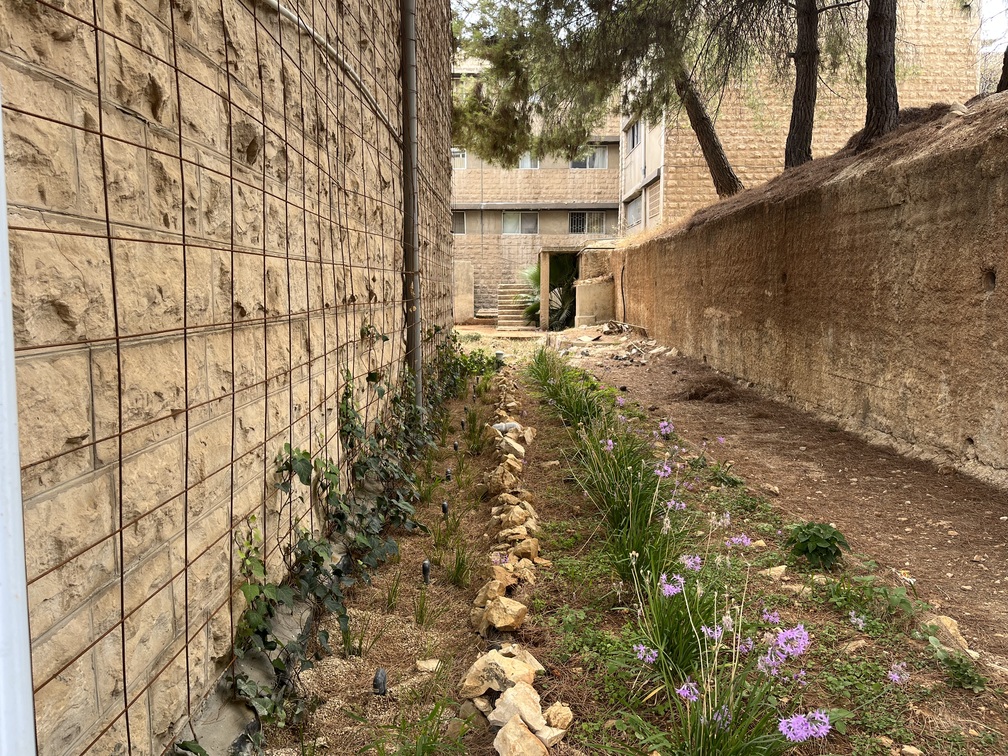
Furthermore, awareness and education campaigns can play a role in raising awareness and promoting the understanding of greywater reuse and can be easily implemented through targeted campaigns, public events, and educational materials.
In Jordan, a national water strategy (2023-2040) has been developed aiming to increase the use of treated wastewater in agriculture, industry and urban areas.
Nature-based solutions are thus key elements in our urban environments for addressing climate change, supporting biodiversity and ecosystem services, promoting our health and well-being, and creating vibrant, sustainable cities.
Finally, through the planning and development of cities and urban areas, NbS are a crucial tool for promoting biodiversity and ecosystems and their importance for cities as well as the surrounding landscape.
Watch the video where Prof. Ahmed Al-Salaymeh – project coordinator at the University of Jordan- talks about the project’s installations at this link.
You can also see the impressions of some of the students who attended the training at the University of Jordan here.


